I decided to build my own wooden hand plane after seeing planes from Larry Marshall and Kari Hultman. Making a wooden plane is almost a craftsmans right of passage, like a Jedi building his own lightsaber. (Sorry, should have issued a nerd alert.) It is an extremely fulfilling project and can provide some great learning moments as well.
David Finck’s book, Making and Mastering Wood Planes, was invaluable in learning the ins and outs of the plane making process. He really breaks down the process step by step, with incredible detail. Honestly, its hard to make a mistake if you follow the process carefully.
I found a great piece of Tiger Maple to use for the body of the plane and already had some Bubinga which I used for the cross pin and wedge. I then bought a 2″ blade with a chip breaker from David Finck. I dimensioned all my pieces with a band saw, jointer, planer, Lie-Nielson #4, and a Stanley block plane.
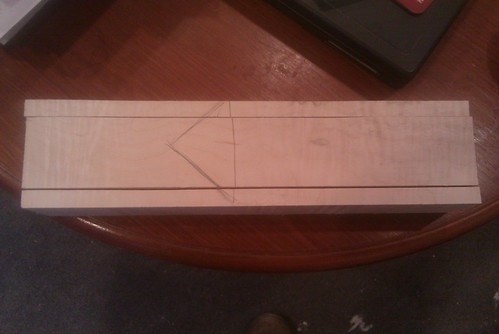
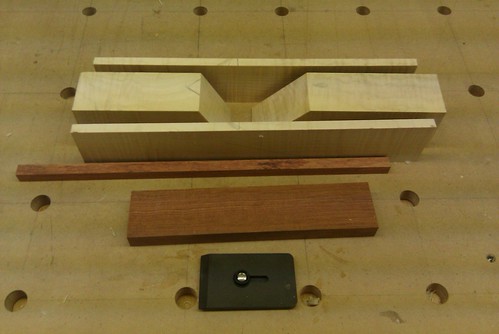
After gluing up the plane and shaping the wedge, I let is sit for a day, then trued and squared all the surfaces. David recommends using the plane some before starting the shaping process to get an idea how it will handle. This allows you to shape it more comfortably.
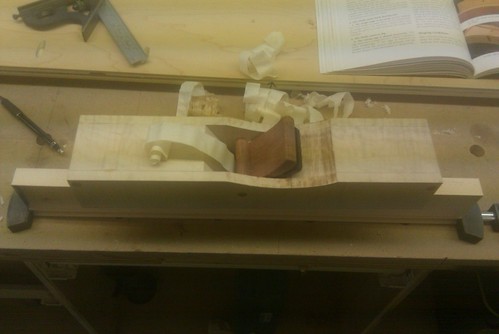
I used my Boggs spokeshave from Lie-Nielsen, cabinet scrapers, rasps, and a block plane to final shape the plane after roughing it out on the bandsaw. I thoroughly enjoyed that process. Shaping wood absolutely fascinates me. Using sharp, quality tools makes that shaping time even more enjoyable.
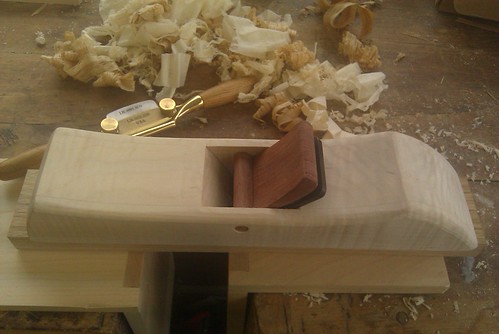 It stayed at this point, without finish, for a couple weeks until I was able to get some Shellac. I used Shellac because it really makes the figured Maple pop. By the way, did you know that Shellac is basically bug poop? Fascinating, isn’t it? It was my first experience using it, and I found that it was relatively simple to apply. I used a premixed Shellac from Zinser so I didn’t have to make my own from flakes. Maybe next time I’ll be more ambitious. I’m extremely happy with how the plane looks with the finish applied!
It stayed at this point, without finish, for a couple weeks until I was able to get some Shellac. I used Shellac because it really makes the figured Maple pop. By the way, did you know that Shellac is basically bug poop? Fascinating, isn’t it? It was my first experience using it, and I found that it was relatively simple to apply. I used a premixed Shellac from Zinser so I didn’t have to make my own from flakes. Maybe next time I’ll be more ambitious. I’m extremely happy with how the plane looks with the finish applied!
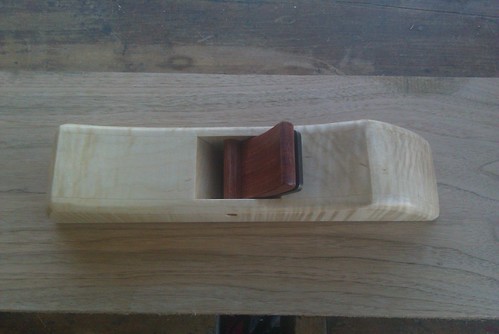
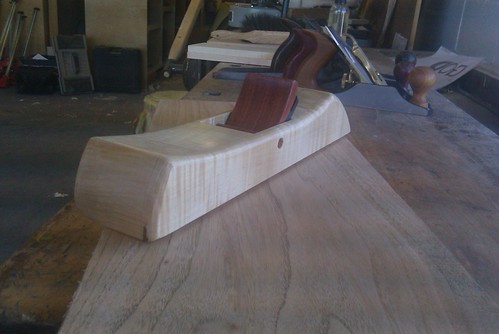
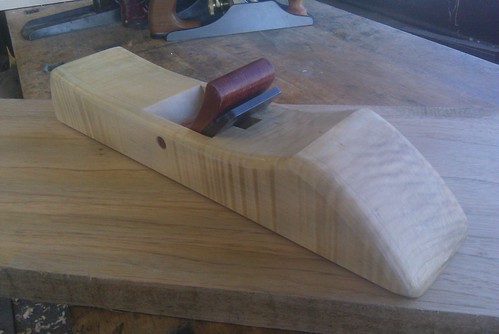
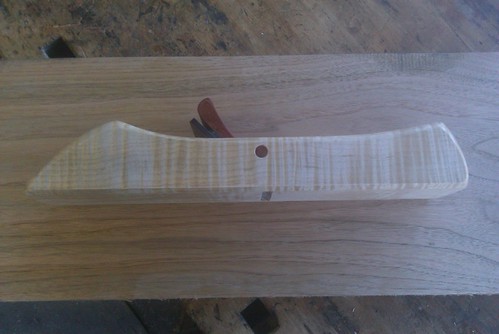
I absolutely love using this plane. Wood planes just feel so much more natural than metal bodied planes to me. Don’t get me wrong, I still love my Lie-Nielsen #4 and still drool over a Marcou or a Saur & Steiner. There is just something special about a handmade tool that nothing else will compare to. Its a closer connection with the tool, which also translates into a closer connection with your work. I can’t wait to make another plane, probably a block plane, soon. I also look forward to making some profile planes in the near future as well.
Great work Scott. I will be curious to hear your thoughts after working with it on a few projects. Contrast it with your Lie Nielsen and why you reach for the wooden one over the metal one. Since this is your first wooden plane it will be great to hear these insights from a new inductee.
Beautiful plane made, you have. Passed your Jedi test, you did.
Don’t look at mixing shellac from flakes as a chore. Rather, it’s a powerful tool. First, the flakes are easier to store and don’t go bad on the shelf. More important, however, is that you can mix up the amounts you’ll use and in any concentration you like. I keep 1lb and 2lb cuts of amber and blonde on hand at all times, using Mason jars for storage.
Cheers — Larry
That is one beautiful hand plane!! And if it performs on a par with how good it looks… ;-D
Olly.